|
It was June of 2016 while attending the Descorchados NY South American wine event that I first met Felipe Ortiz. Felipe is Chief Winemaker for Casa Donoso located in the Maule Valley of Chile. I remember being caught up in his enthusiasm and passion as he introduced me to his very intriguing wines. Felipe said that the Maule Valley had a “multiplicity of characters” and then gave a general description of the wines. “White wines are very fresh with mineral traces, in particular our Sauvignon Blanc. Red wines with short maturity cycles show a very good balance between alcohol and acidity, like Merlot and Cabernet Sauvignon. And above all, a nice and silky Carménère is a tricky and demanding variety which is hard to mature properly in other valleys”. One year later we met again at the same event. And once again, my palate was treated to Felipe’s expressive wines. We have stayed in touch throughout the last few years with the hope that I might visit Casa Donoso one day. I have not had the opportunity to travel to Chile yet, and now with travel on hold for most of us, it is unlikely that I will visit there any time soon. So, Felipe sent Casa Donoso to me with a bountiful shipment of wines and a candid long-distance conversation. Chile is a long and narrow country bordering the Pacific Ocean to the west, and to the east lie the Andes Mountains, which is among the world’s highest mountain range in the Western Hemisphere. Chile spans 2700 miles running from north to south and is only 100 miles wide. Its numerous wine regions are then divided into sub-regions. Due to the expansive range of terroirs, the style of wines made here has an equally wide range, with most of the climatic variations in the wine-growing regions running from east to west due to the influence of the ocean and mountains. Casa Donoso is located in the sub-region of Talca, which is in the heart of the Maule Valley and is part of the DO Central Valley region. Maule Valley is the largest wine-producing region and also the oldest wine-growing region in Chile. Some of the countries’ oldest vines that were planted over 100 years ago still exist here. It is also one of the southernmost wine-growing areas of Chile. The soils throughout Maule Valley are of sedimentary origin, such as sandy and deep clay loam and the climate is Mediterranean. The main grapes grown here are Cabernet Sauvignon, Carménère, Merlot, Carigñan, Sauvignon Blanc, and Chardonnay. Casa Donoso was created 30 years ago by a group of French investors who saw the potential of this unique terroir. They made it their mission to focus on the production of premium wines from the onset. They were among the first foreign investors to introduce modern technology to the winemaking industry in Chile. In 2014 the Selume family, a national group, took over. Felipe said, “They continue to follow the line of quality in the wines. We have a French heritage from the beginning as well as a new world winemaking vision, which allows us to generate high-level wines. Casa Donoso is a classic and elegant concept in the Maule Valley.” Felipe Ortiz joined Casa Donoso in 2008. I asked Felipe how he became interested in winemaking and where he received his training. Felipe: “I think my first approach to the wine world was thanks to my father. He always showed me varieties of wine pairings with food when I was young. Then at the university, I studied Agronomy Engineering in Chile. To be a winemaker here, you must first study agronomy. During the last years of my studies, I leaned towards viticulture and enology, a branch of agronomy. In Chile, before I finished the university, I started working during the vintage season at Los Vascos for a total of four vintage seasons. Then I also worked at Viña San Pedro during another harvest season.” Felipe graduated with a degree in Agronomy Engineering and Enology. From 2006 to 2008 he went on to develop his career working with wineries in California, Provence and Barossa Valley in Australia. It was the middle of 2008 when he joined Viña Casa Donoso where he is now the chief winemaker. Felipe is a member of the Chilean Association of Engineering Agronomists Enologists. (ANIAE) Casa Donoso has 400 hectares of vineyards located throughout Maule Valley from central Maule to the coastal and pre-mountain zones. The altitude on average is 100 meters (328 ft) above sea level. One of their vineyards, La Oriental Estate, is in central Maule and one of the oldest estates in Talca with 123 hectares and vines that are more than 60 years of age. The Donoso portfolio of wines is diverse and has several different brands representing a range of traditional and atypical red blends. When I met Felipe in 2016, the very first wine he poured for me was Sucesor Romano Limited Release 2015. Sucesor is considered “the avant-garde line of the Donoso group.” It is also a project that has inspired Felipe and allowed his creativity to shine through with these daring blends. Felipe, tell me about Sucesor and its inception. Felipe: “Successor was created with the need to seek oenological innovation. In 2013 we started working with Carigñan with a more friendly and assembled concept called Successor BLUE. Then in 2014, we developed Sucesor Romano, a challenging project made with the César noir grape that was almost extinct in the world. Jean-Michel Boursiquot is a renowned ampelographer, who rediscovered what is now Chile’s flagship grape variety, Carménère. He also discovered the César noir grape (Romano, colloquial name) in our fields in the ‘90's. He later helped us with the information process to register the grape in Chile. We have just 0.5 hectares of this variety in our vineyard and we are the first winery in Chile to commercialize this grape. We continued our project with Sucesor RED, which is Carménère assembled with Malbec, also an unusual mix in Chile and the world. And, starting in the year 2019, we began developing a new project with Sucesor, using the grape, Portuagais Bleu. We hope to release this project in the coming year.” What is the most challenging grape for you to work with? Felipe: “I think with relevance to the Sucesor project, it is César noir. It is a very delicate grape, which we have to cut at the right time without losing freshness. Then in the winemaking process we try not to over-extract it too much. Finally, the wine rests for short storage in Spanish amphoras and another part in used barrels (not new), which increases its potential. César noir originates from Burgundy, strongly planted in the Irancy area, where history tells that it is mixed with fine Pinot noir to improve its concentration. In Chile, it is estimated that it arrived during the year 1945. But there is information that it may have even arrived earlier.” Has climate change affected your approach to winemaking? Felipe: “Undoubtedly! Ten years ago, the Maule Valley (160 miles from Santiago in southern Chile) was much colder and we had to wait longer than normal for grapes to mature. For example, Carménère harvesting took place at the end of May. Today climate change has affected an increase in temperatures where the same Carménère is harvested 30 to 45 days earlier. Unfortunately, together with climate change, we have had to adapt to drought and low rainfall over time. So we have to generate new ways to advance in winemaking. Each year is different; there are no recipes to produce good wine.” The Wines D Icon Limited Edition 2015 This is an unfiltered, Bordeaux-style wine blended with 40% Cabernet Sauvignon, 30% Carménère, 20% Malbec and 10% Cabernet Franc. Grapes are harvested from 70-year-old vines. Wine is aged for 24 months in French oak barrels, of which 25% is new oak. Aromas of dark berries, spice and a touch of floral lead to a luscious palate of plum, blackberry, spice and vanilla. It is beautifully blended with silky tannins and a long finish. A trace of herbs and vanilla linger. Felipe: “It is a very elegant and aromatic wine, not very concentrated, Bordeaux style, but with a lot of character of our terroir. For me, it shows a very elegant and classic concept of Maule valley!” Alcohol: 14% SRP: $55-$65 1810 Super Premium Cabernet Sauvignon- Carménère 2017 The blend for this wine is 50/50. Grapes are harvested from 40-year-old vines and the wine is aged for 18 months in French oak barrels, of which 15% is new oak. The name for this wine honors an important part of Chilean history. Talca was the site where the Chilean Act of Independence was signed in 1810. Dark berries, plum and spice aromas segue onto the palate with notes of fig, toast and vanilla. This is a subtle and smooth wine with firm tannins and a lengthy finish. It is very elegant. Felipe: “It shows what is done with these two varietals in Chile, a lot of country image in this wine and another of our classic wines. It is of the classic line, but with a very marked concentration and intensity.” Alcohol: 13.5% SRP: $30-$35 Bicentenario Gran Reserva Carmenere 2018 This wine is 100% Carménère. Grapes are sourced from 30-year-old vines. 70% of the wine is aged for 12 months in French and American oak barrels and the remaining 30% is kept in stainless steel tanks. The name and label are a tribute to 200 years of independence for Chile. Subtle floral aromas mix with fresh red fruit that gently spills onto the palate with notes of raspberry, dark berries, spice and soft tannins. It finishes nicely with a hint of toasted oak. Felipe: “This Carménère follows a line that is NOT overripe or high alcohol but is a very fresh Carménère. Red fruit, mild spices, and an elegant mouth. One of the characteristics of the Maule Valley is the freshness of the wines (different to other valleys in Chile)” Alcohol: 13.5% SRP: $16-$20 I love what the back label for the Sucesor wines says. “Sucesor is the disordered line of Casa Donoso Winery where our winemaker proposes daring and innovative blends that step out of the classic style of the winery. These wines have been created for all wine lovers who are each day bolder.” Sucesor Blue Limited Release 2015 This is a blend of 60% Carigñan, 25% Cabernet Sauvignon and 15% Cabernet Franc. Grapes are harvested from 80-year-old vines in the coastal vineyards of Loncomilla. 30% of the wine is aged in Spanish amphoras for 18 months and 70% in French oak barrels for 15-18 months. Lush dark and red berry aromas leap out of the glass with a touch of floral and dark cherry added. This wine is smooth and delicious with berries, plum and mocha dancing on the palate. Subtle notes of minerality blend well with this refreshing red. Felipe: “This shows the Carigñan in another face from the normal. it is a fruity, fresh wine style, assembled with Cabernet and Cab Franc. It also does not pursue a lot of alcoholic degrees and is a very friendly concept of Carigñan. Part of its aging is using Spanish amphoras, which reflects a very powerful fruit.” Alcohol: 13.5% SRP: $35-$45 Sucesor Red Limited Release 2016 This is a blend of 80% Carménère and 20% Malbec. Grapes are harvested from 40-year-old vines. 30% of the wine is aged in Spanish amphoras for 18 months and 70% in French oak barrels for 15-18 months. Heady aromas of floral mingled with red fruit and spice spill onto the palate to reveal notes of strawberry and cherry that blend nicely with spice and a trace of red plums. Silky tannins and a long finish with vanilla and spice lingering will make any palate sing. Felipe: “This wine shows a very different face of Carménère mixed with a Malbec. It has floral notes and generates a very interesting nose. In the mouth, there is a bit more concentration and intensity but without losing the elegance of the Carménère (soft tannins). Sucesor plays with amphoras in the aging, which is characteristic of the line.” Alcohol: 13.5% SRP: $35-$45 Sucesor Romano Limited Release 2018 This is the first time I have tasted a wine made with César noir. It is a blend of 90% César noir and 10% Carménère. Grapes are harvested from 70-year-old vines. 50% of the wine is aged in Spanish amphoras and 50% in French oak barrels for a period of eight to ten months. Seductive floral aromas with notes of red fruit, raspberry and spice set the stage for this delicious wine. Floral notes continue onto the palate with layers of rich berries, spice and plum. Minerality, hints of herbal and nice acidity add depth to this juicy wine. The finish is long with violet, vanilla and mocha lingering on the palate. Felipe: “Cesar noir has been a rediscovery of this variety in Chile, which we found in our fields. It is a project that started in 2013 and the first vintage was 2015 and introduced around the world (USA, EU, ASIA, Brazil). We were the first winery in Chile to show this wine. It is a very fresh wine, red fruit, medium body and characteristic juiciness of this Maule Valley. It is a very different proposal and an invitation to the innovation of all this Sucesor line.” Alcohol: 13.5% SRP: $35-$45 After tasting through these wonderful wines, I’m eager to know what the Donoso Group has in the pipeline for the future. What goals in winemaking are you still looking to achieve? Felipe: “I think to continue doing work with grapes that are little worked on or lost in the world such as Cesar noir and Portugais Bleu. The innovation side I think is very challenging as a winemaker. Also, Donoso Group supports these developments and I feel very pleased about it. My pursuit is to make wines that fully reflect the terroir that they come from, always generate a unique character independent of the variety and finally make wines that the consumer remembers and enjoys always.” Of course, I can’t end this conversation without asking what your personal favorite wine is to drink? Felipe: “I think my favorite wine depends on the moment. For example, for a barbecue I look for wines with a higher concentration such as Cabernets or mixtures based on cabernet, it can also be a Carigñan. If we talk about seafood, what better wine than a rich Sauvignon blanc from the Maule foothills. For milder or spicy foods there are many alternatives such as Carménère, Romano, Malbec, among others.” Felipe has definitely captured the essence of the terroir in these wines and sipping them has brought me a tad closer to Chile. However, I can’t wait until the doors open once again for traveling. I’m looking forward to a 360-degree tour of Casa Donoso and another wine tasting with Felipe! Until next time…
Cheers! Penina To leave a comment or if you have an inquiry, please contact me at [email protected] After enduring many sultry days, I enjoyed waking up this morning to 53-degree temperatures and no humidity! And yes, it put me in the mood for red wine, even though I have some lovely white and rosés chilling. I selected Domaine Bila-Haut, which is produced by Michel Chapoutier. Michel is a fourth-generation oenologist and head of Maison M. Chapoutier, founded in 1808. It is located in the Rhône wine region in southeastern France. Michel is one of Rhône’s most famous wine producers and is known worldwide for such wines as Hermitage, Chateauneuf du Pape and Côte Rôtie. In 1999, Michel purchased the 190-acre estate Domaine Bila-Haut located in the region of Côtes de Roussillon, Languedoc in Southwest France. It was a neglected property but showed promise due to the Mediterranean climate and a mix of schist, gneiss and clay soils. With Michel’s knowledge, expertise and passion he turned the land into a perfect growing environment for Syrah, Grenache and Carignan. Sustainable farming and low yields along with Michel’s belief of “emphasis should be on quality, not quantity” have led to producing the highest quality fruit and concentrated flavors in these expressive wines. Les Vignes de Bila-Haut Rouge Côtes Du Roussillon Villages 2017 This Syrah-dominated wine is blended with Grenache and Carignan. Grapes are hand-harvested from plots located on the slopes of the high Agly Valley. Vibrant aromas of plum, dark berries, spice and cocoa set the stage for this succulent wine. Michel Chapoutier adds that it has “the smell of summer rain on stone.” The palate offers layers of plum, dark cherry, spice and pepper that tease and linger on a long finish. This is a beautifully blended and well-balanced wine with silky tannins. Enjoy with grilled fish, meat and dessert! Alcohol: 14% SRP: $15 Domaine de Bila-Haut L’esquerda Côtes Du Roussillon Villages 2017 This is a single vineyard wine made from old vines. Syrah dominates the blend with small amounts of Grenache and Carignan added. The percentages of the blend vary from vintage to vintage. The grapes are hand-harvested from the 67-acre L’esquerda vineyard comprised of 40 to 60-year-old vines that grow in granite and schist soils. Earthy aromas mix with dark fruit, spice, floral notes and mocha. The palate offers juicy notes of black cherry, blackberries, plum, spice and a hint of wet stone. The finish is long with a touch of chocolate and herbs lingering. Delicious! Serve with grilled meat, tuna, poultry and hearty stews.
Alcohol: 14.5% SRP: $28 These Rhône wines are elegant and expressive and Michel Chapoutier never disappoints! Until next time… Cheers! Penina To leave a comment or if you have an inquiry, please contact me at [email protected] Many of you have been questioning of late why the “knitter” in The Wineknitter has disappeared. I have many excuses lined up, but truth be told, my passion for knitting waned. I must confess that I haven’t picked up knitting needles in over two years…that is until last week. A family member recently reached out to me and asked if I would teach her how to knit. I was quite happy to do so. As we sat sipping wine and going through the basics of knitting, I realized how much I’ve missed the challenge of designing and creating knitwear. And I had forgotten how peaceful and centering knitting is. Although I don’t have a lot of time anymore to sketch, work out patterns, etc., my teaching session motivated me to grab some yarn and start knitting. So, with knitting needles, yarn and a glass of wine in hand, I embarked on a quick project! The “pour” that paired with my knitting project is Michel Chapoutier’s Domaine de Bila-Haut L’esquerda Côtes Du Roussillon Villages L’esquerda 2016. Domaine Bila-Haut is located in the region of Côtes de Roussillon, Languedoc in Southwest France. Michel Chapoutier is a fourth-generation oenologist and head of Maison M. Chapoutier. He is world-renowned and one of Rhône’s most famous wine producers of Hermitage, Chateauneuf du Pape and Côte Rôtie. The blend of Domaine de Bila-Haut L’esquerda 2016 is mostly Syrah with small amounts of Grenache and Carignan. The percentages vary from vintage to vintage. The grapes are hand harvested from the 67-acre L’esquerda vineyard comprised of forty to sixty-year-old vines that grow in granite and schist soils. The color of the wine is deep purple with intoxicating aromas of dark berries, spice, pepper and vanilla. The palate is layered with blackberries, plum, raspberry, fennel, spice and hints of minerality. The finish is long and filled with blackberry jam, chocolate, pepper and a touch of fennel. This is an expressive and beautifully balanced full-bodied wine. Serve with grilled meats, chicken, cheese, tuna steak and hearty stews. Alcohol: 14.5% SRP: $28 As a side note, Michel Chapoutier’s wine labels are also printed in Braille. It is Michel’s way of paying homage to Maurice de la Sizeranne who was born in 1857 and had lost his sight by age nine. Maurice was one of France’s most noted philanthropists and founded the Revue du Braille, perfecting the system of abbreviated Braille. Maurice and his family are also known for a small plot of land they own in the famous Hermitage appellation where Chapoutier sources grapes for one of his most famous wines, Monier de la Sizeranne. If you would like to learn more about Bila-Haut wines, please click on “Categories” on the right-hand side of this page. My knitting moments will be far and in-between going forward, but every now and then, I will post a “sip and stitch” story. Here is my finished cowl neck scarf which took a few hours to make. Until next time…
Cheers! Penina To leave a comment or if you have an inquiry, please contact me at [email protected] What does a French winemaker have in common with Havana, Cuba? And how did I end up at a Cuban restaurant tasting some extraordinary wines from the Languedoc-Roussillon region of France. It seems that Stephane Kandler, owner of Château Tourril has a passion for wine, cigars, the sea and the mystique of Cuba. Having named a few of his wines honoring these passions, Havana Central Times Square Restaurant in NYC. was the perfect choice for Stephane along with Loubaton Imports and Sud de France to host a Havana-themed wine tasting and luncheon. Château Tourril is located in the commune of Roubia on a 13-hectare family vineyard in the Languedoc-Roussillon region between the famous city of Carcassonne and the Canal du Midi, in the south of France. At the origin of the Château is an ancient gallo-roman signal tower that sits on top of the estate for which the Château is named. “Tower” in French is “tour”. The vineyard is enclosed in a clay-limestone corrie surrounded by garrigue (scrubland) that acts as a barrier, protecting the vines against winds and frost. See slide show below. Château Tourril only produces wine from the AOC Minervois appellation. The grapes are harvested from Syrah, Cinsault, 100-year-old Carignan, Grenache and Roussanne vines. The entire production process takes place at the Château using modern winemaking technology. After the 2016 harvest, they made the move to certified AB organic production. Their first full organic AOC Minervois Harvest was in 2017. This year Château Tourril will be celebrating its 20th anniversary. Stephane Kandler, owner and second generation, took control of the family business three years ago after spending twenty years as a professional sailor competing in the America’s Cup. In Stephane’s words “I was mainly on the sea with salt and water. Three years ago I decided to pack my bags and go back on land. I decided to take over the family business. We started 3 years ago with a goal to become a prominent Languedoc estate, increasing quality of wine and vineyards going organic. Good for nature, the land and soil.” We tasted four Tourril wines at the event; all of them were of good quality and quite expressive. We started with the AOC Minervois Rosé 2016 Havana. The name “Havana” was given to the Rosé because it makes one think of parties, sun and warm weather. The blend is 70% Cinsault and 30% Grenache. Having reviewed the 2015 Havana Rosé on 8/13/16, I was looking forward to trying the 2016. I was not disappointed! The color is pale strawberry with aromas of fresh fruit and hints of citrus. The palate offers cherry, citrus and lots of freshness, balanced with a smooth and zesty finish. A “playful” rosé for sure! Alcohol: 12.5% SRP: $14 The AOC Minervois White Helios 2016 is 100% Roussanne. The color is pale yellow with wonderful aromas of fresh flowers, pears and herbs. The palate is rich and silky with layers of perfume, fruit, hints of peach and vanilla. Smooth, balanced and dry! Alcohol: 13% SRP: $20 The AOC Minervois Red Philippe 2011 is a lovely blend of 40% Carignan, 30% Grenache Noir and 30% Syrah. The color is royal ruby with heady aromas of dark fruit, cherry and spice. This is a full-bodied wine that layers the palate with blackberries, currants, plums and a hint of pepper. Smooth tannins and long finish give this wine richness. Alcohol: 13% SRP: $18 The AOC Minervois Red Panatella 2011 is a beautiful blend of 80% Syrah and 20% Grenache. And of course, the wine is named after the Cuban cigar! This was definitely one of my favorites. The color is dark purple with luscious aromas of dark berries, spice and herbs. This is a full-bodied wine with so much character! The palate is silky smooth with dark fruit, anise, spice, tobacco and a smokiness that lingers on the finish. Well done! Alcohol: 13.5% SRP $20 In January 2017 Château Tourril launched a program in support of local economy and disadvantaged people. KuB© is an eco-friendly rechargeable wooden box that contains a 3 liter Bag In Box. The wood is obtained from sustainably managed forests and the boxes are manufactured locally by a specialized institution that helps disabled people. The design is clever because the box can also be used as a birdhouse without any modification. Pretty awesome! And what would a Havana themed tasting be without hand rolled cigars! Château Tourril wines are elegant and versatile for drinking as aperitifs or pairing with foods. Take a look at their website at: http://www.chateautourril.fr
Cheers! Penina To leave a comment or if you have an inquiry, please contact me at [email protected] It is not uncommon for UPS and Fed-Ex to deliver wines to my door from wineries, PR agencies and importers. I love exploring regions, discovering new wines and learning about the winemakers without having to pack a suitcase. Of course, nothing compares to actually walking through a vineyard with glass in hand! 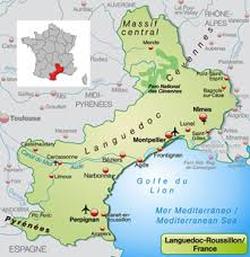 Most recently, I received a box of wines containing samples of Michel Chapoutier’s 2015 Domaine de Bila-Haut “Les Vignes” Rouge and “Les Vignes” Blanc. Domaine Bila-Haut is located in the region of Côtes de Roussillon, Languedoc. It is in Southwest France, and very close to Spain. 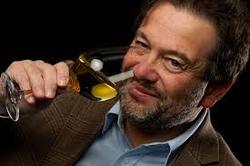 Michel Chapoutier Michel Chapoutier Michel Chapoutier is head of Maison M. Chapoutier. He is world-renowned and is one of Rhône’s most famous wine producers of Hermitage, Chateaneuf du Pape and Côte Rôtie to name just a few. He purchased the 190-acre Domaine Bila-Haut in 1999 . It was a neglected property but showed promise with the land being a mix of schist, gneiss and clay. With Chapoutier’s knowledge, expertise and passion along with the climate of the Mediterranean, he turned the land into a perfect growing environment for Syrah, Grenache and Carignan. Bila-Haut wines reflect all of this. Les Vignes de Bila-Haut Rouge is elegant. This is a beautiful blend of Syrah, Grenache and Carignan. The color is so dark it borders on violet. Intense aromas of dark cherry, blackberry, spice and herbs are present. The palate offers lots of dark fruit, plum and pepper. The “jammy” flavors blend well with the spice. The wine is medium-bodied with soft tannins and an extra treat of pepper and chocolate on a long finish. Alcohol: 14.5% Les Vignes de Bila-Haut is a lovely blend of 50% Grenache Blanc, 20% Marsanne, 20% Macabeo and 10% Vermentino. It is interesting to note that only 4% of the grapes in this region are allocated to white wine. And, Michel Chapoutier has done a stunning job of capturing the essence of these varietals. Soft yellow in color, this crisp wine is very aromatic with citrus, vanilla, floral, lemon and hints of stone fruit that segue onto the palate. It has a creamy mouth-feel with a lingering bit of zest and the sea on the long finish. Alcohol: 13.5% The wines are available nationally and on select wines lists as well. They retail for about $15.
Both wines will pair well with a variety of foods. With the holidays approaching, these are wonderful wines to serve with appetizers, entrees and even dessert! They are a great value for the price and easy wines to drink! Enjoy! Cheers! Penina This is a brief look at Chile and its wines. 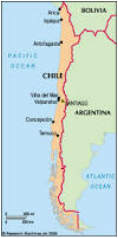 Chile is a long and narrow country bordering the Pacific Ocean to the west and the Andes mountains to the east. It spans 2700 miles of land running from north to south and is only 100 miles wide. Due to the expansive range of terroirs, the style of wines made has an equally wide range, with most of the climatic variations in the wine-growing regions running from east to west due to the influence of the ocean and mountains. 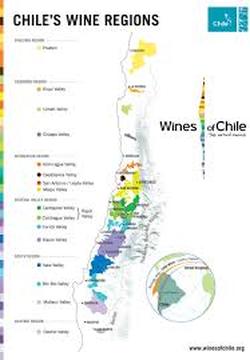 There are numerous wine regions in Chile that are then divided into sub-regions. Rather than listing them all, the map on the right should be helpful. Maipo Valley is home to most of the country’s wineries and is Chile’s most-established wine region. It is considered the birthplace of Chile’s wine production. Curicó Valley is one of the oldest and largest wine regions with Maule being the oldest wine region. Chile has a long viticulture history dating back to the 16th century. There were only 12 wineries in existence in 1995 and today that number exceeds 476 across six regions. 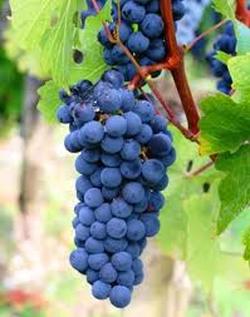 Carménère grape Carménère grape With over 20 varieties of grape grown, the Carménère grape has become the “signature” grape of Chile. Originally planted in the Médoc region of Bordeaux, France, it was thought to be extinct after the European phylloxera outbreaks in the 19th century. However, the grape was rediscovered in Chile in the 1990s. The Carménère grape is known for it’s deep red color with flavors of blackberry, cherry and spice. Cabernet Sauvignon accounts for more than one third of Chile’s grape production. In addition, Syrahs, Malbecs and old vine Carignan from Maule are among the more popular grapes grown. White wine grape varieties grown in Chile are also important such as Sauvignon Blanc, Chardonnay, Semillon and Riesling. 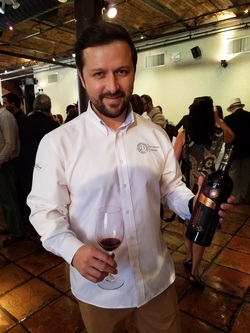 Felipe Ortiz, Chief Winemaker Felipe Ortiz, Chief Winemaker Last week I had the opportunity to meet and chat with Felipe Ortiz, Chief Winemaker of Casa Donoso Winery. Felipe has worked in France, USA, and Australia and has now brought his talents to Casa Donoso. The winery has four vineyards located in the Maule Valley. La Oriental Estate located in the heart of the Maule Valley boasts plants of more than 60 years of age. San Vicente Estate has plants that are more than 50 years old. Las Casas Estate is on the coastal zone of the Maule Valley and Fudno Pencahue is located on the coast. To quote Felipe with regard to Maule Valley’s “multiplicity of characters”; “White wines with very fresh and mineral traces, in particular our Sauvignon Blanc. Red wines with short maturity cycles showing a very good balance between alcohol and acidity, like Merlot and Cabernet Sauvignon. And above all, a nice and silky Carménère, is a tricky and demanding variety which is hard to mature properly in other valleys”. It was a pleasure conversing with Felipe and I look forward to visiting Casa Donoso in the near future and getting a first hand tour! The first wine Felipe poured for me was Sucesor Romano Limited Release 2015. It is 85% Cesar Noir and 15% Carignan and is made from the grapes in La Oriental Estate. Ruby red and wild berry aromas give way to juicy blackberry and spices. The wine is sophisticated with medium tannins and a long finish. Alcohol: 13.5% The next pour was “D” a 2011 Limited Edition blend of 40% Cabernet Sauvignon, 30% Carménère, 20% Malbec and 10% Cabernet Franc. This unfiltered estate bottle’s origin is La Oriental Estate. The wine is elegant with dark fruits, oak and spice on the nose seguing into a balanced and silky finish with just the right touch of pepper and licorice. Alcohol: 14% The last wine I tasted was the 2012 Perla Negra, “a selection of grapes from the oldest and best musts of the domaine.” The blend is 50% Cabernet Sauvignon, 20% Carménère, 20% Malbec and 10% Cabernet Franc. Aged in French oak barrels, the wine has heady aromas of berries, spice and herbs. The palate offers a rich array of ripe berries, spices and a hint of cocoa. Tannins were chewy, and needs time to open. This wine is a gem. Alcohol: 14% I have more Chilean winemakers to talk about and will do so over the next few weeks.
Happy Weekend! Cheers! Penina |
Categories
All
|

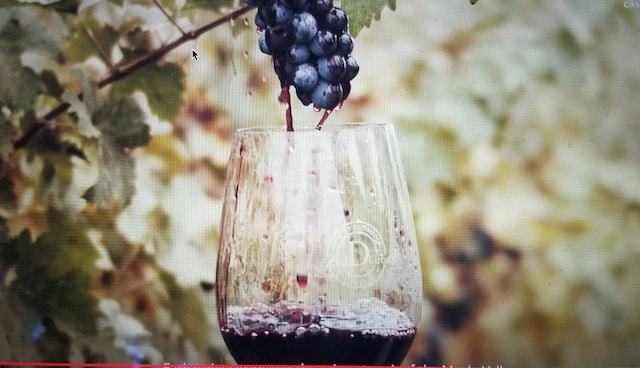
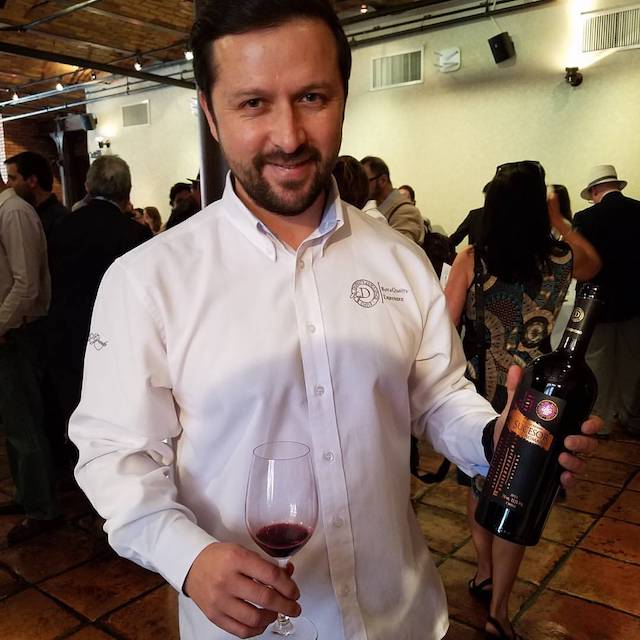
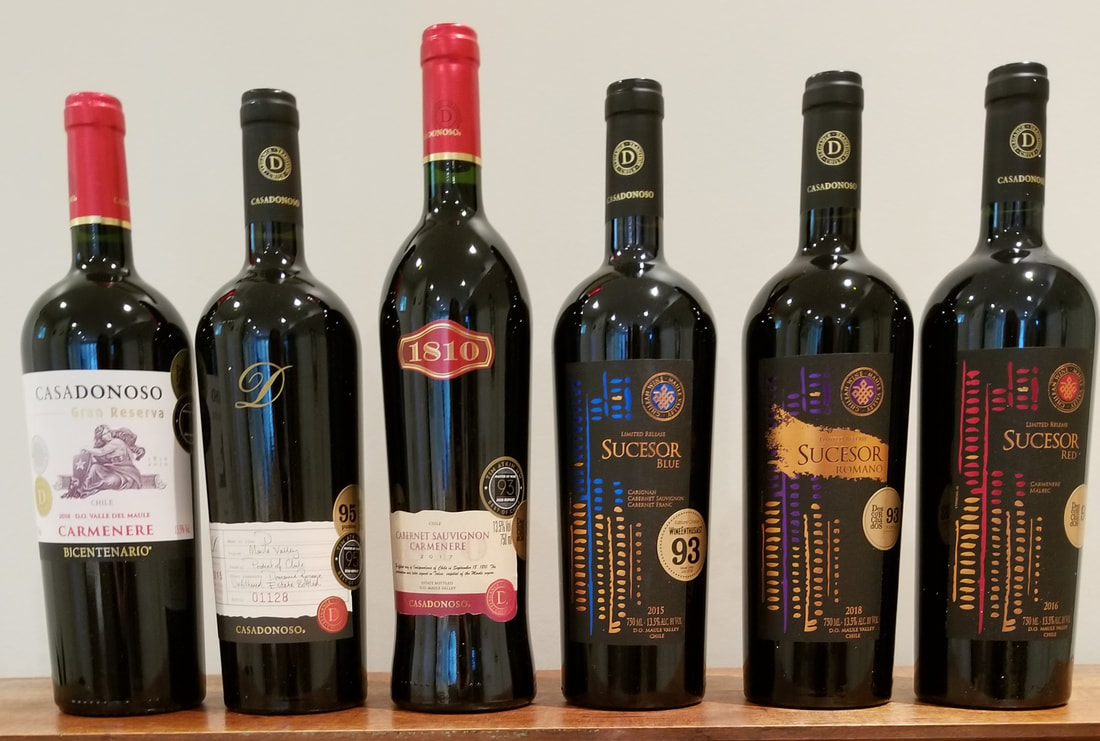
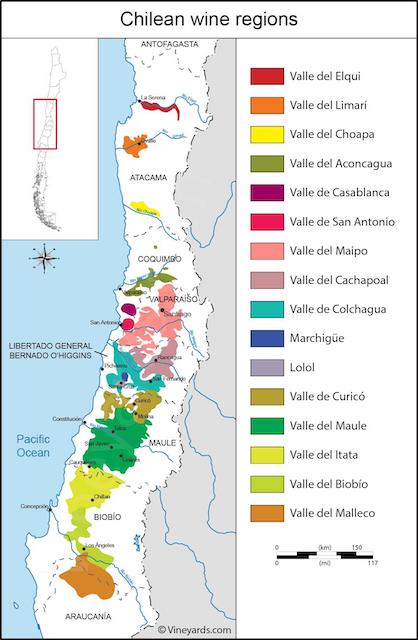
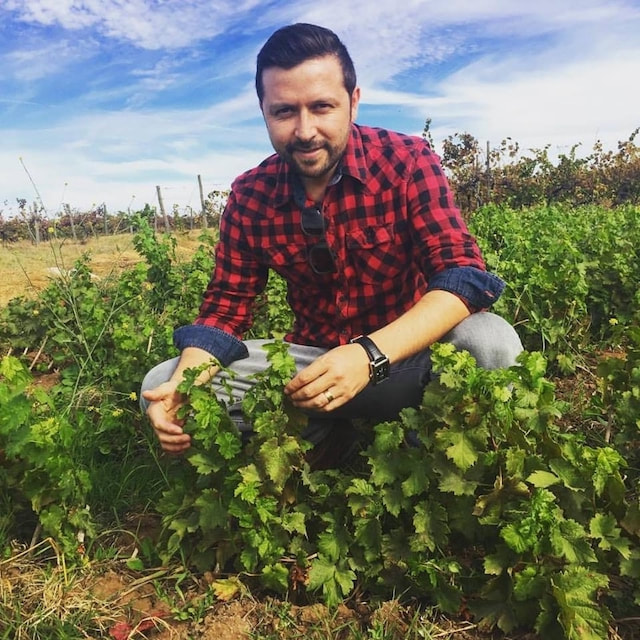
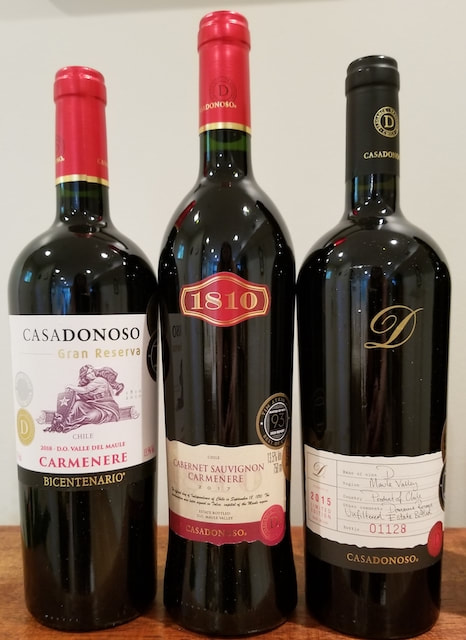
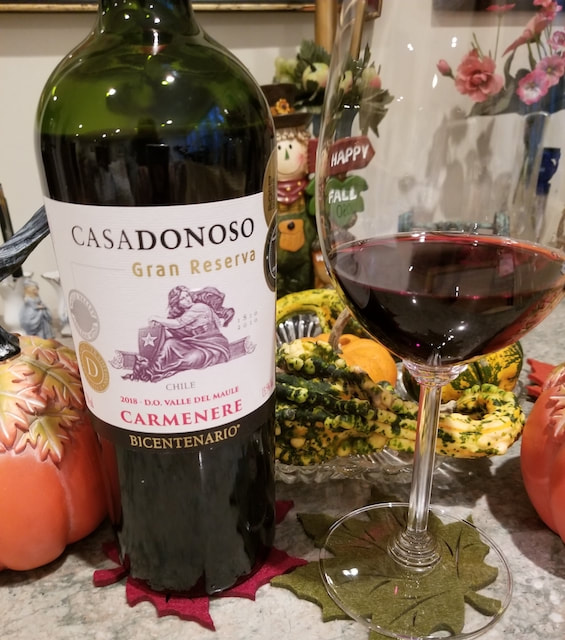
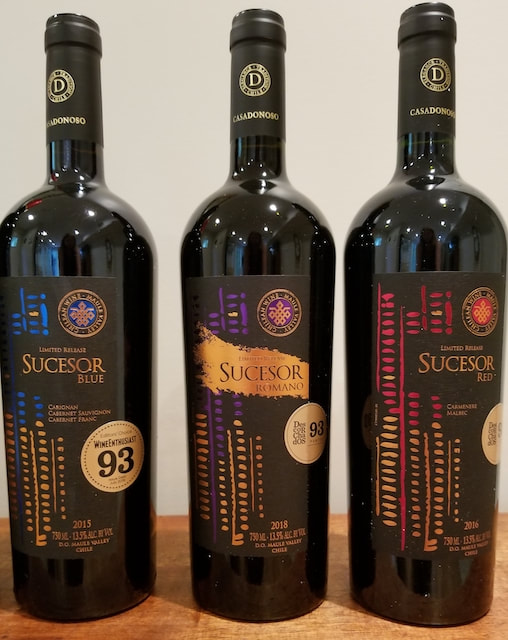
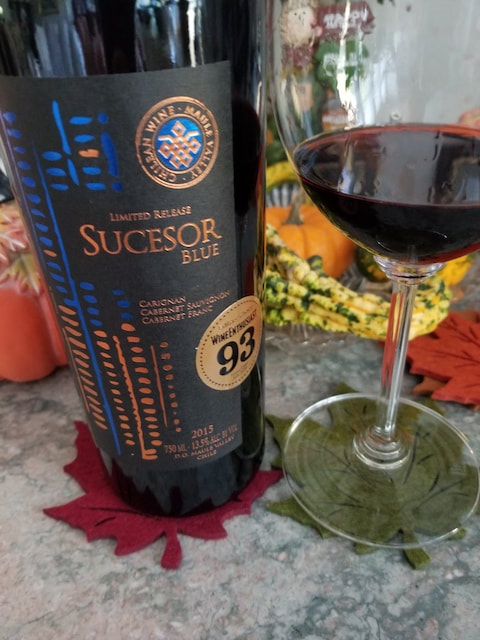
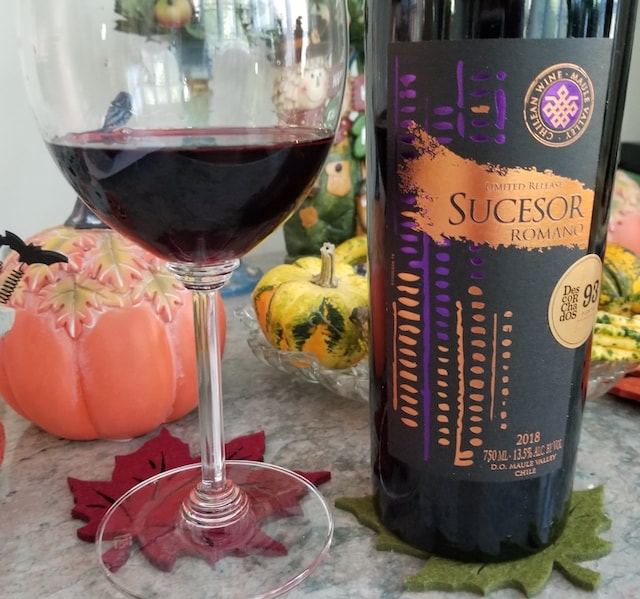
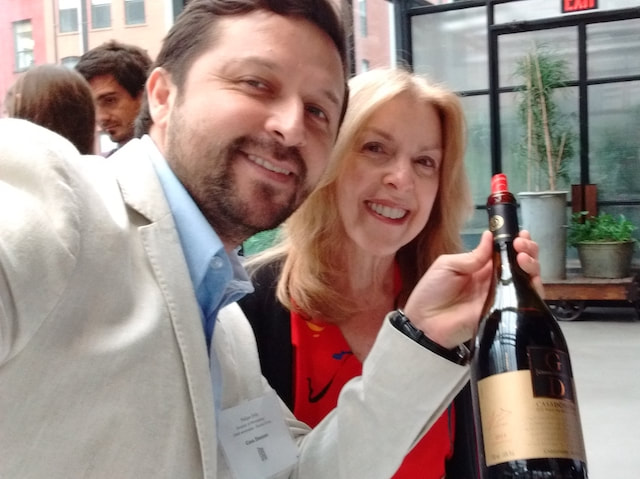
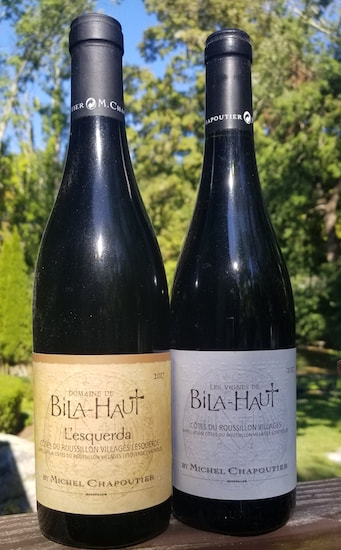
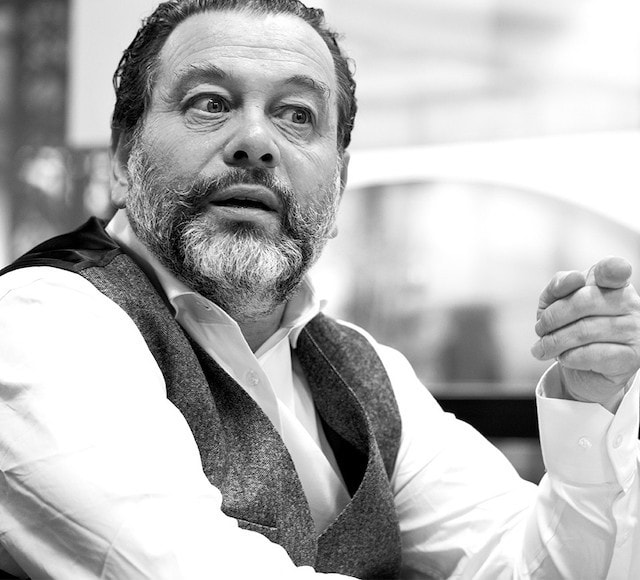
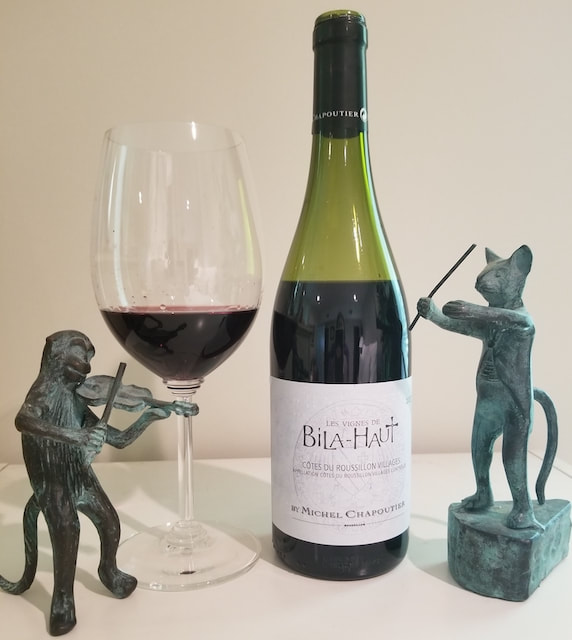
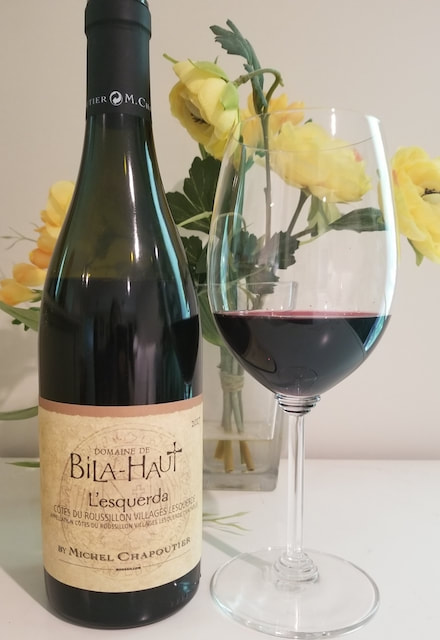

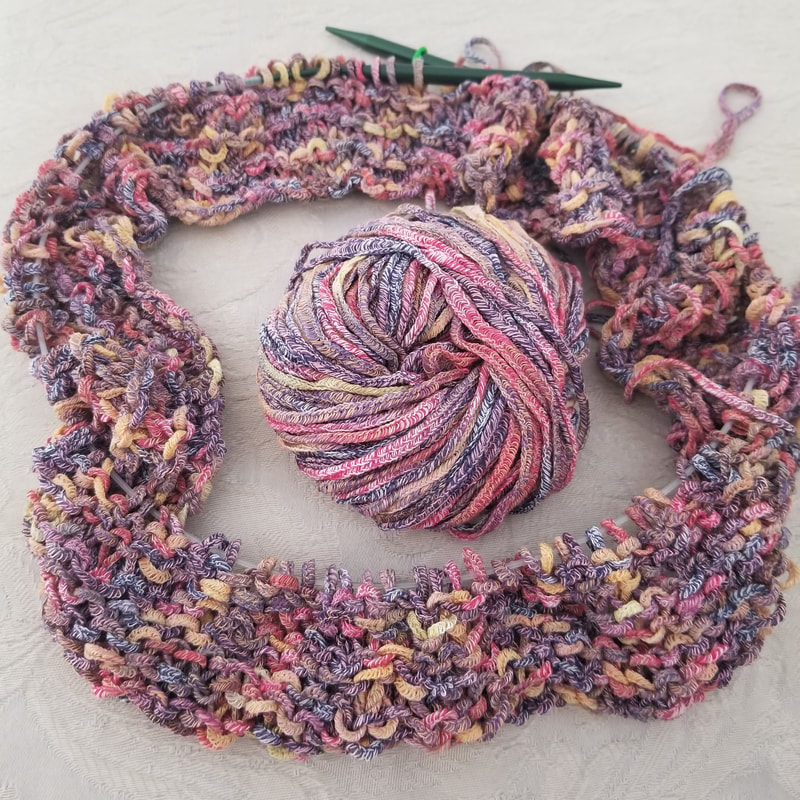
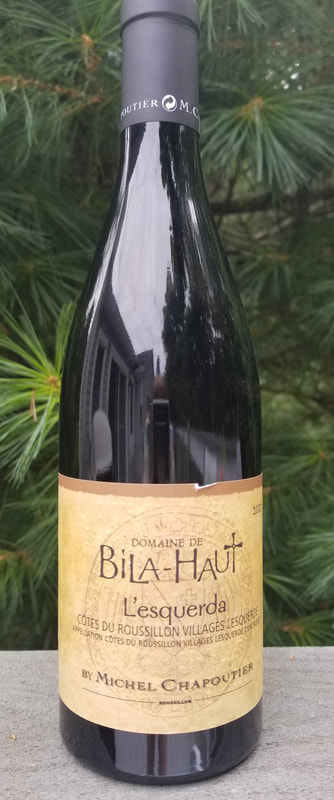
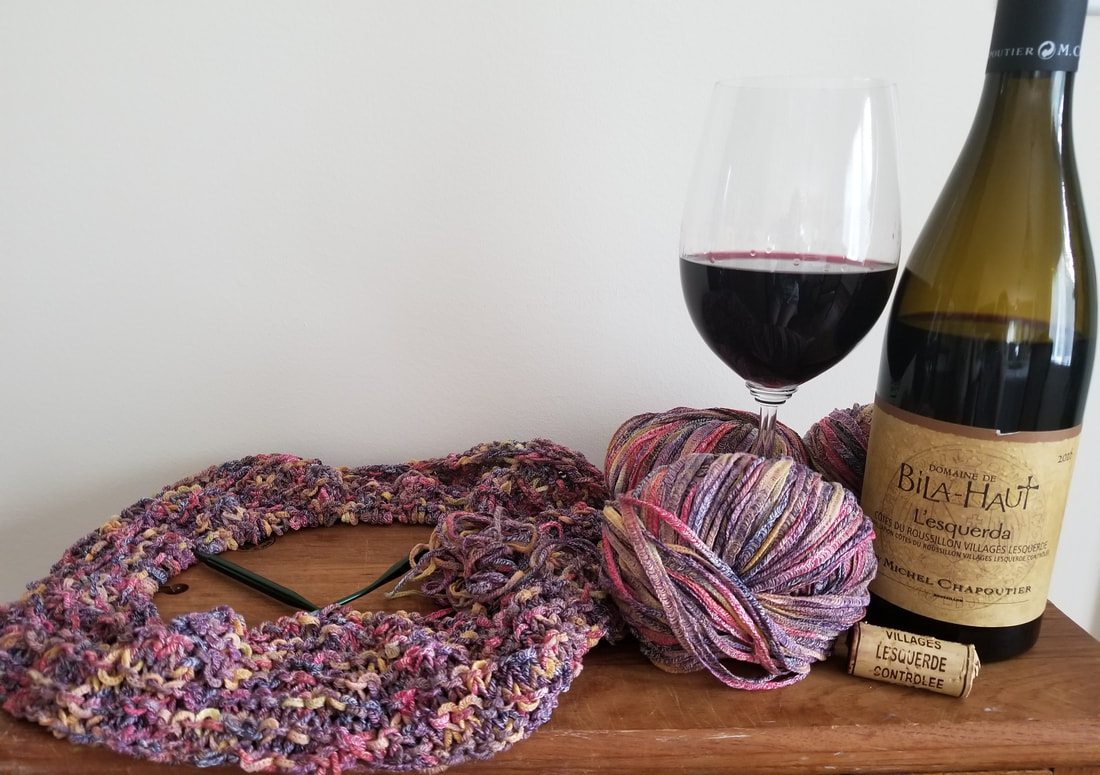
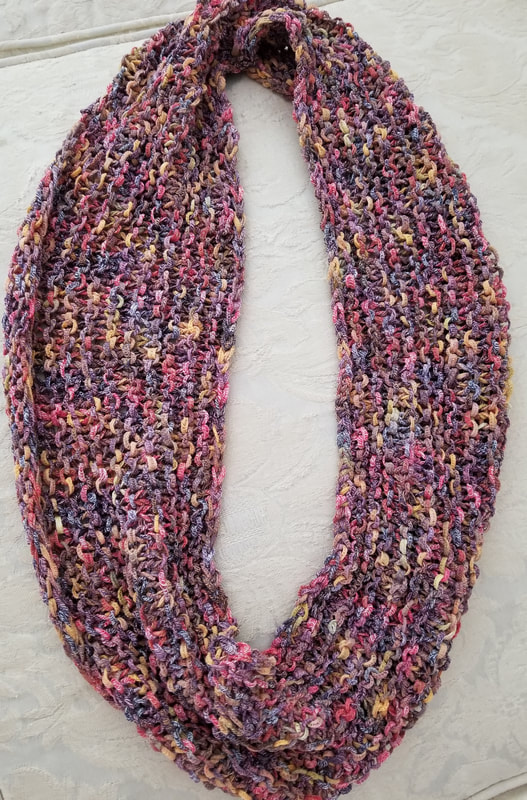
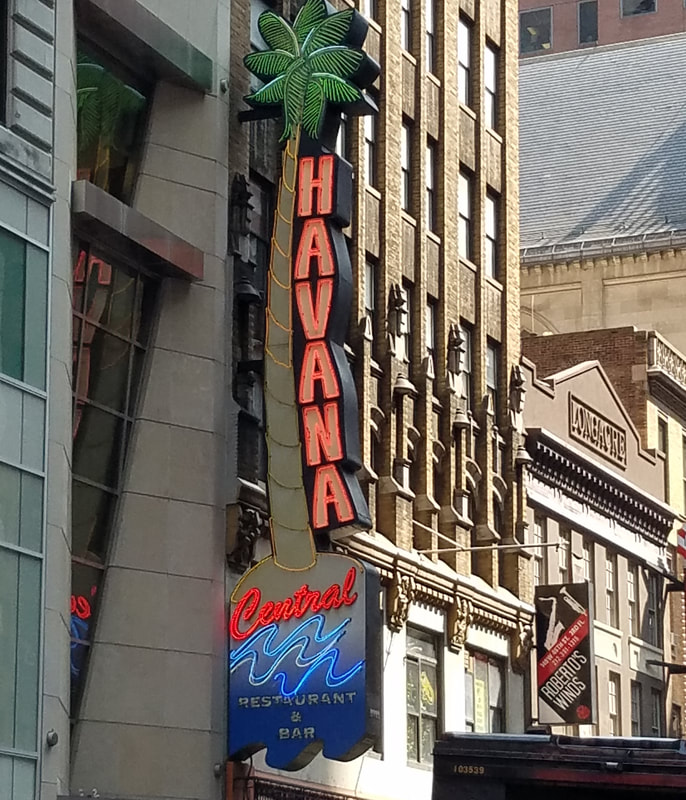
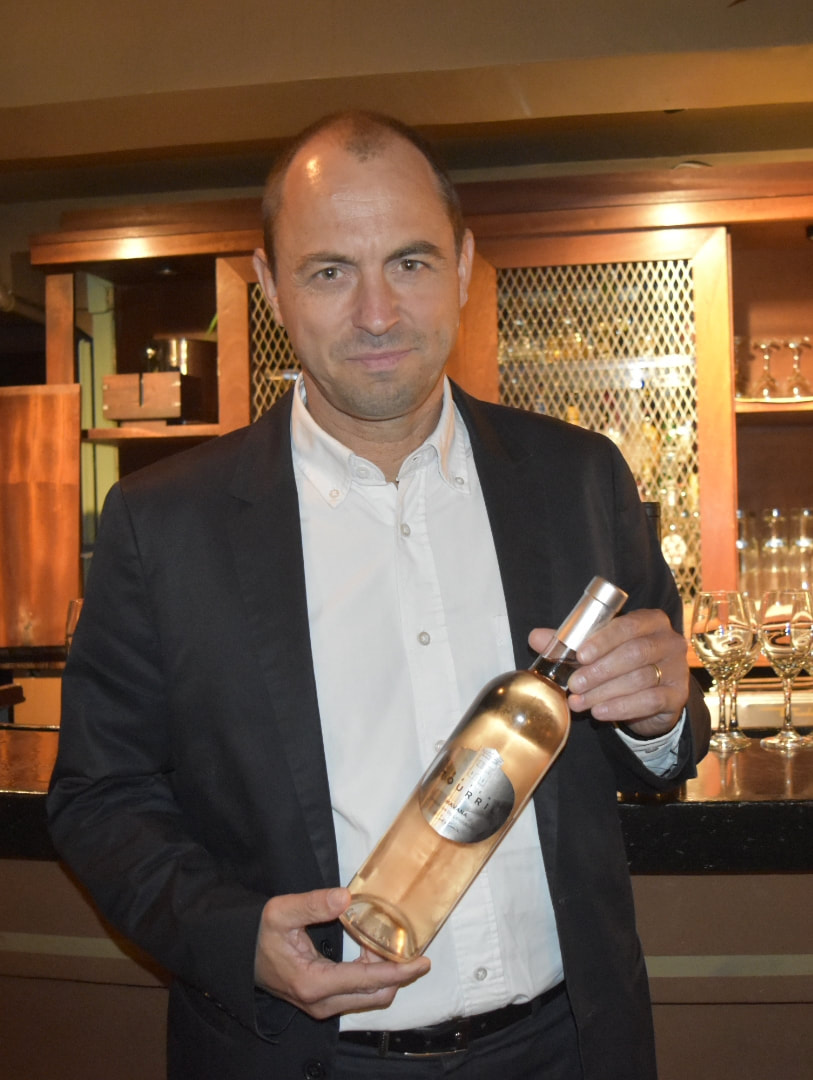

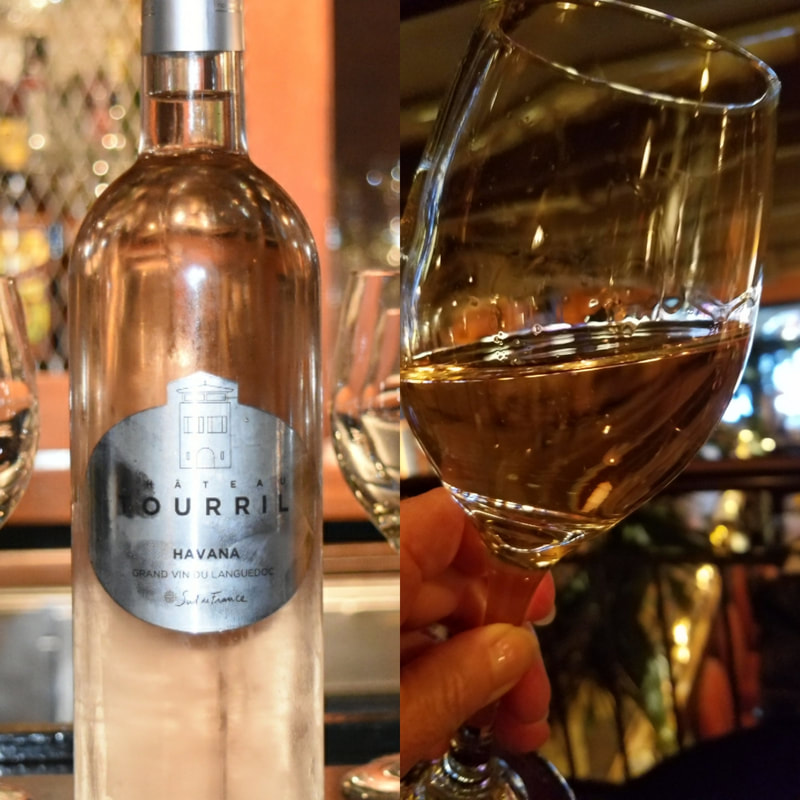
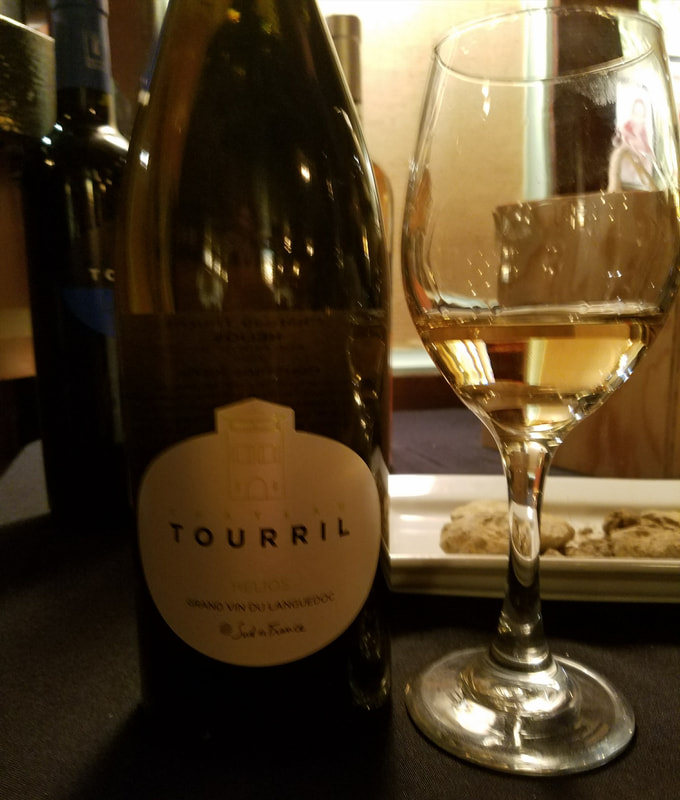
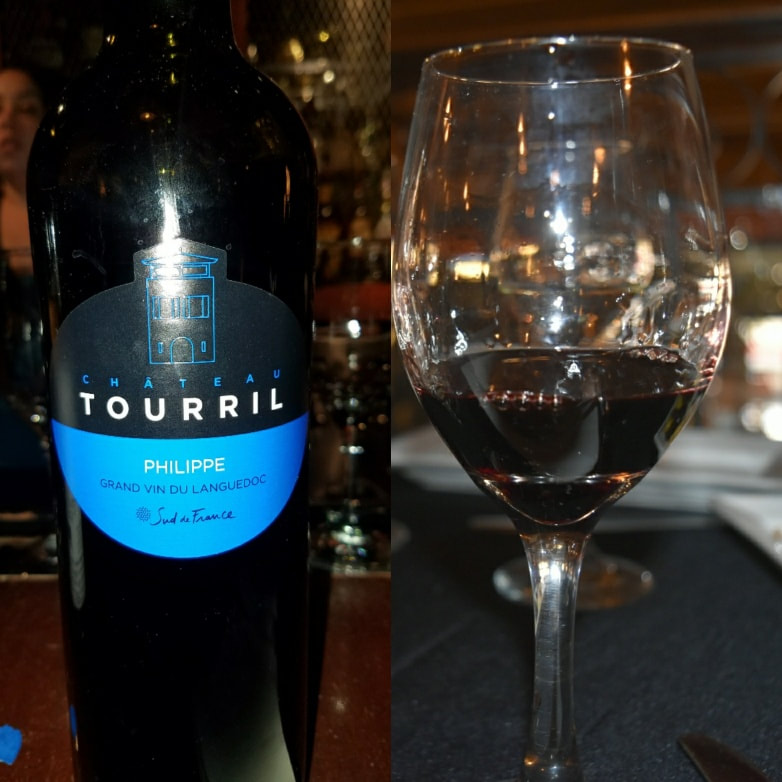
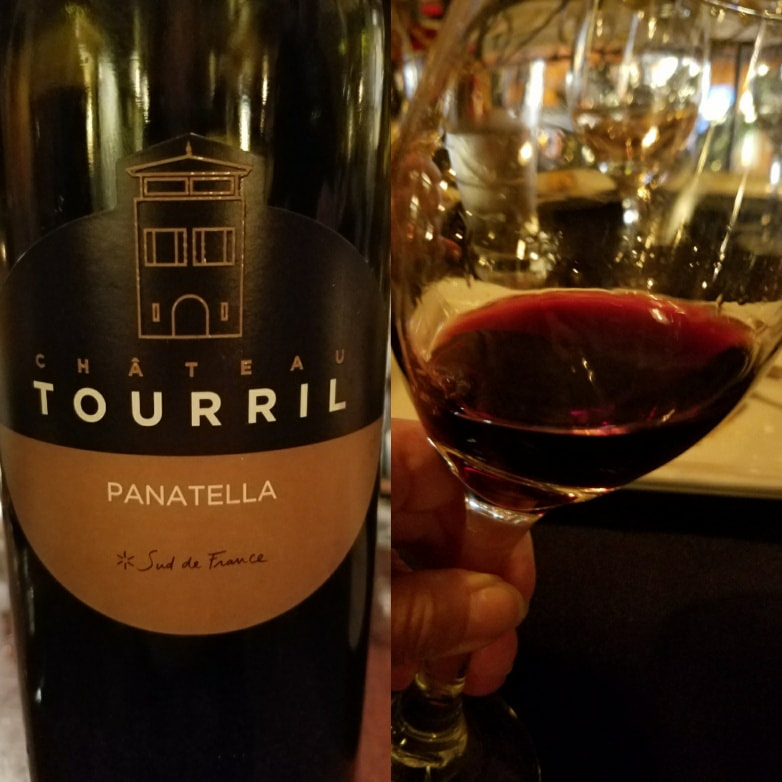
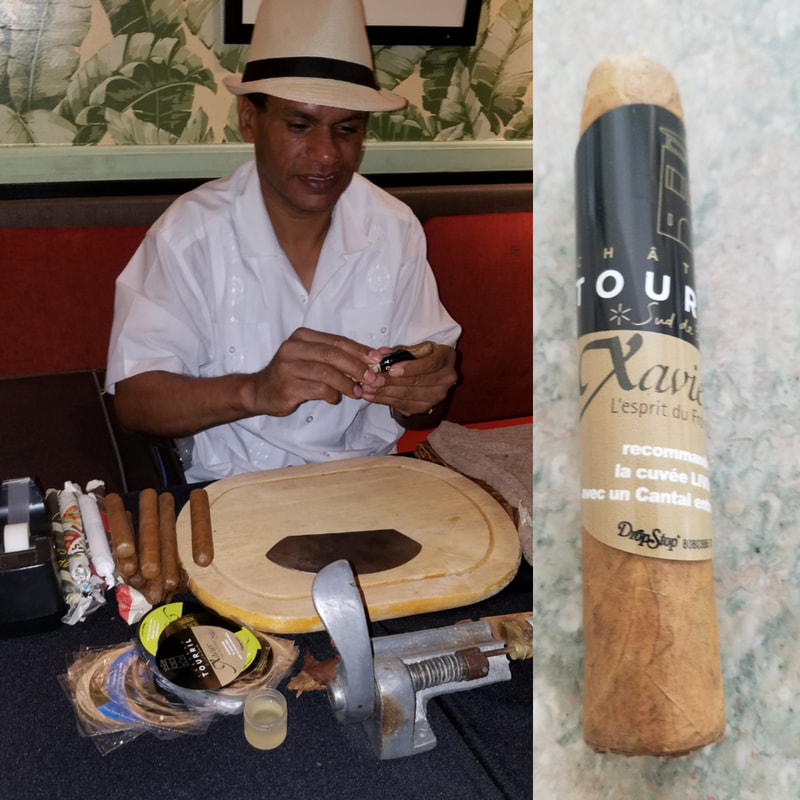
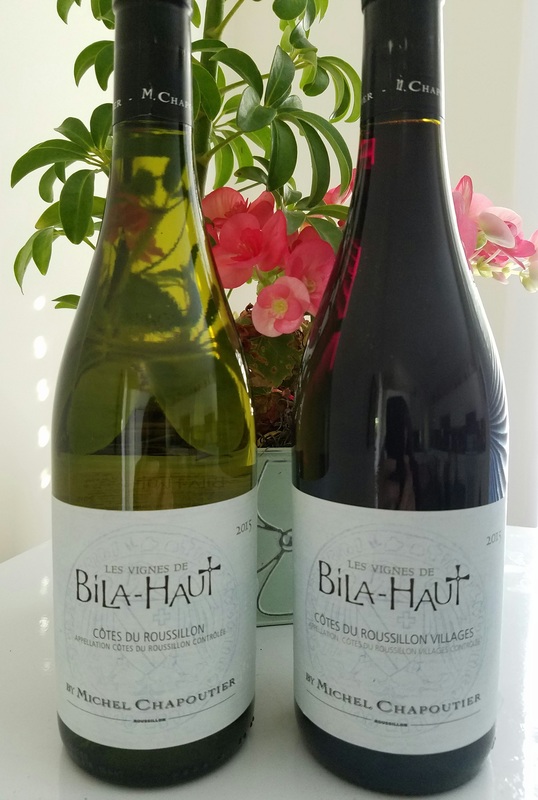
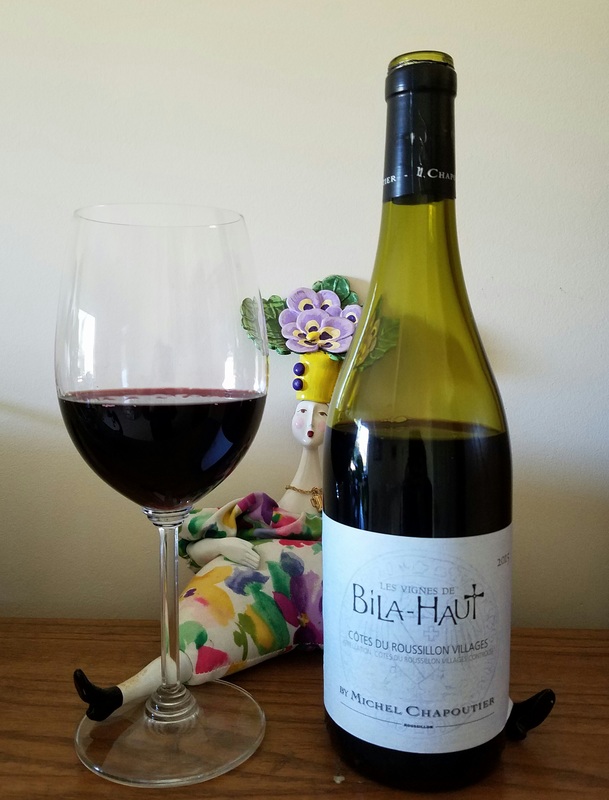
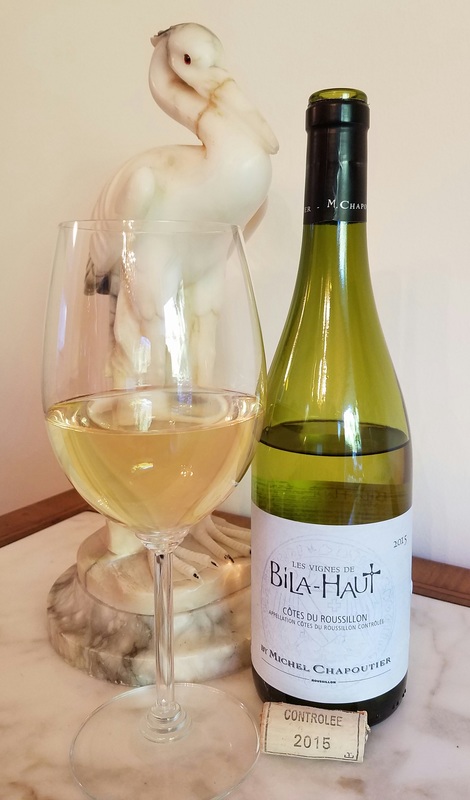
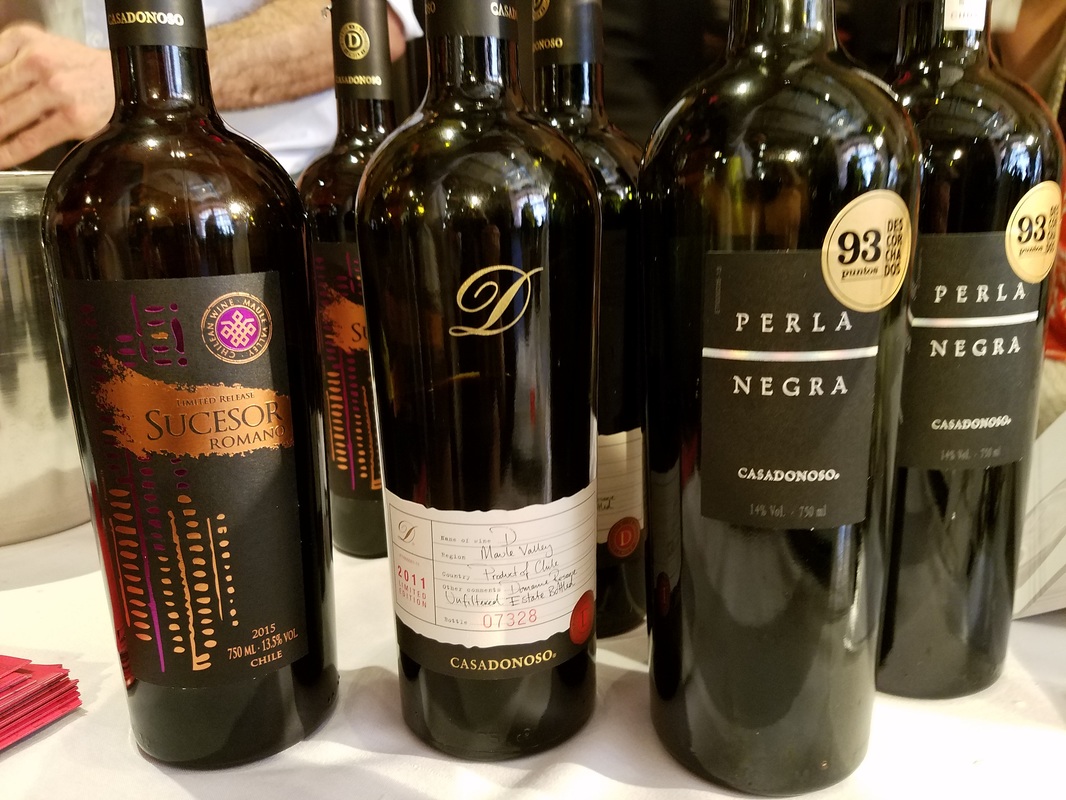
 RSS Feed
RSS Feed